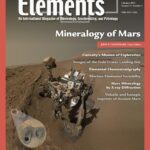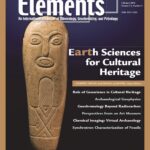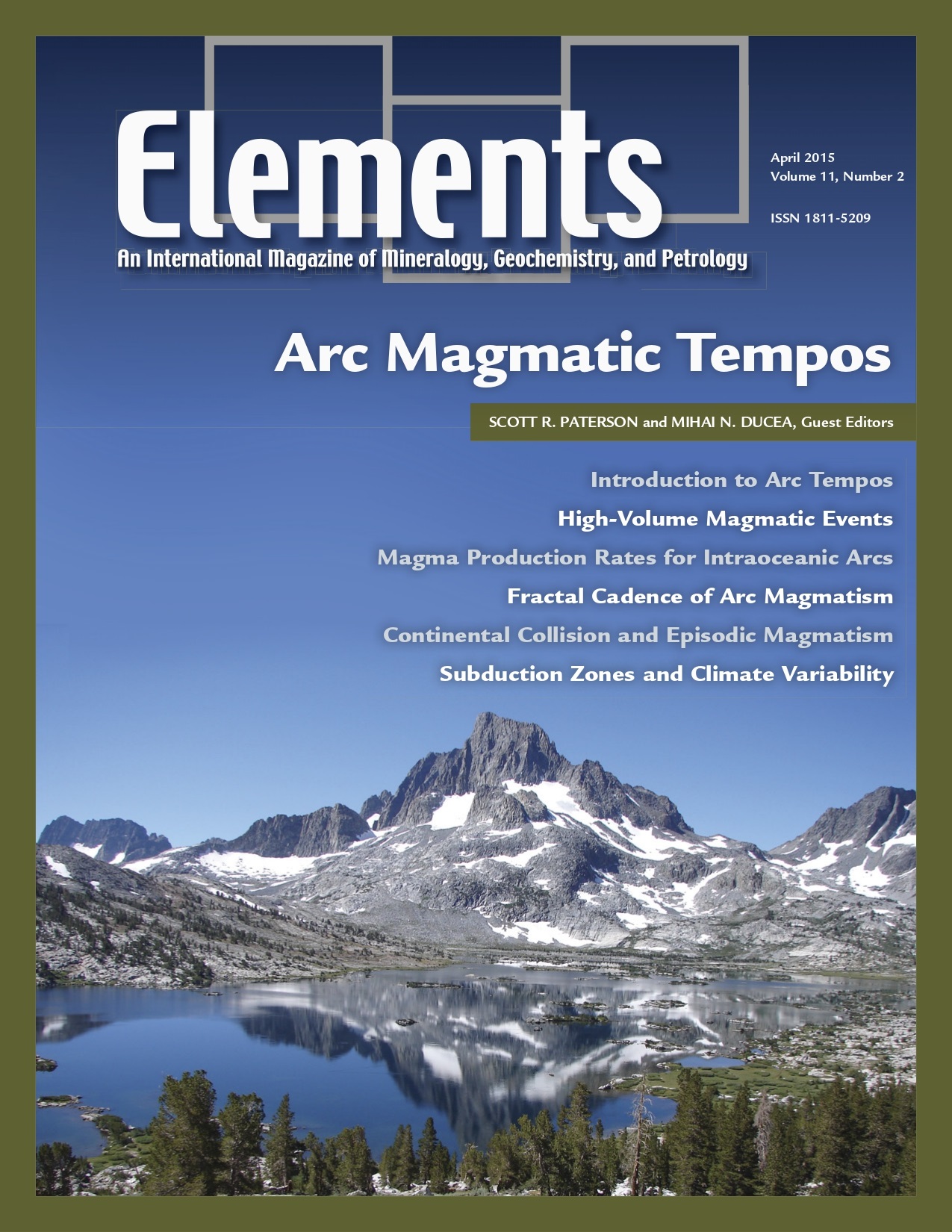
Mineralogy Of Mars, February 2015, Vol. 11, No. 1
June 28, 2024
Earth Sciences For Cultural Heritage, February 2016, Vol. 12, No. 1
June 28, 2024Arc Magmatic Tempos, April 2015, Vol. 11, No. 2
$20.00
Research over the past decade has established that magmatism in oceanic and continental arcs is not temporally or spatially steady-state. The causes of well-documented order of magnitude increases in magmatic production over relatively short-lived, high-volume events remain controversial.
Arc Magmatic Tempos
April 2015, Vol. 11, No. 2
Research over the past decade has established that magmatism in oceanic and continental arcs is not temporally or spatially steady-state. The causes of well-documented order of magnitude increases in magmatic production over relatively short-lived, high-volume events remain controversial. Since the differentiation of our planet and formation of the continental crust and its underlying mantle lithosphere is in large part the result of magmatic processes at convergent margins, it is imperative that we understand the underlying controls on the tempo of magmatic and tectonic activity in arcs and the episodic nature of magmatism. These processes also influence socially important processes such as long-term climate change, volcanic and fault hazards, and ore deposition. This issue provides an overview of some recently developed models for episodic behavior in subduction magmatism, from global to single magmatic systems, and explore the causes of high-volume events in subduction-related magmas.
Why You’ll Love Elements Magazine:
- Expert Contributors: Articles written by renowned researchers in the field of geoscience.
- Engaging Content: Join a community of readers who are passionate about Elements.
- Exceptional Quality: Each issue is printed on high-quality paper with stunning visuals and detailed illustrations that bring complex scientific concepts to life.
Order your copy of the April 2015 issue of Elements magazine today and delve into arc magmatic tempos.
Related products
-
Energy: A Geoscience Perspective, June 2007, Vol. 3, No. 3
$20.00The issue of energy resources in the future may be one of the most important in the 21st century. Future climate change and the ways to abate it while still supplying needed energy will impact future political relations, world economics, human health, and the environment.
-
Supervolcanoes, February 2008, Vol. 4, No. 1
$20.00Explosive super-eruptions from large volume, shallow magma systems lead to enormous and devastating pyroclastic flows, the formation of gigantic collapse calderas, and deposition of volcanic ash over continent-sized areas. Recognition that future eruptions from these “supervolcanoes” will undoubtedly have severe impacts on society—and perhaps on life itself—has led to recent public and media interest.
-
Nanogeoscience, December 2008, Vol. 4, No. 6
$20.00At first glance, nano and Earth seem about as far apart as one can imagine. Nanogeoscience seems to be a word connecting opposites.




